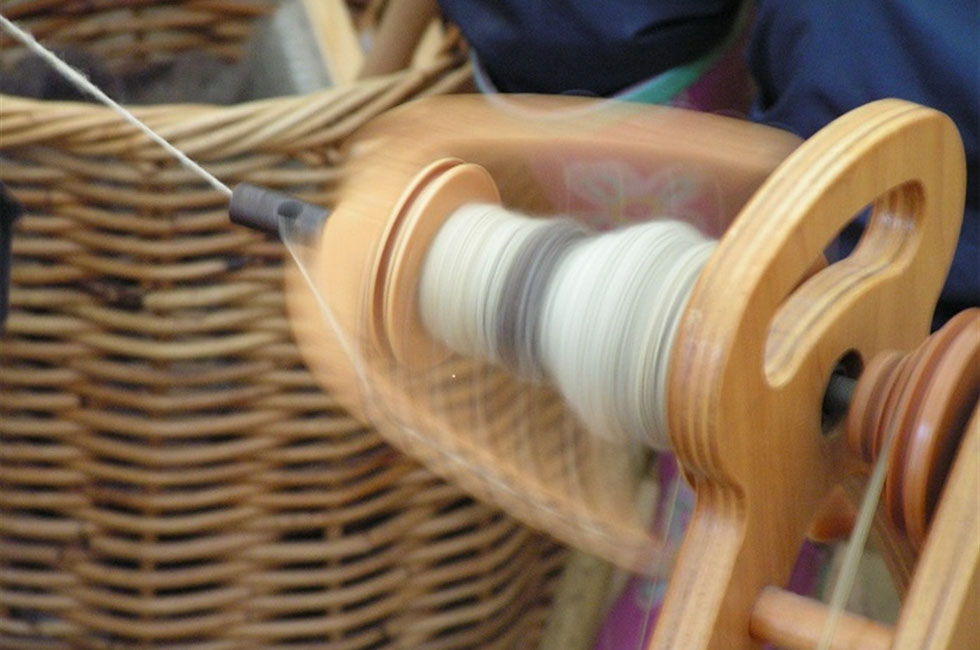Wool Spinning

Structure of wool
Wool is an elongated solid cylinder with a curly shape and a rough surface, consisting of layers of scales, cortex and medulla. The finer the wool, the more scales. Because the scale layer stretches outward and protrudes, the friction between the fibers increases, resulting in mutual restraint and felt shrinkage, and the cohesion force under humid and hot conditions is strengthened. The cortex is composed of two parts: the positive cortex and the subcortical layer. As the main component of wool, it determines the physical, mechanical and chemical properties of wool fibers. The medulla is an opaque, loose substance; the more medulla, the straighter and stiffer the wool, and the worse the quality.
Finishing process of wool fabric
Due to the wide variety of wool fabrics, the finishing process also has certain differences. For example, glossy fabrics may involve: green body repairing → singeing → washing → cooking → dyeing → water absorption → drying – middle inspection → cooked repair → bristles → Shearing → Wetting and parking → Steaming → Voltage; while the suede fabric involves: preparation → washing → dehydrating → shrinking → washing → dyeing → dehydrating → drying → middle inspection → finishing → fluffing → bristle shearing → steaming Brushing → steaming, so today we will discuss the purpose and principle of the general finishing process.
01 Carbonization
Purpose: to remove vegetable impurities from wool. Principle: Utilize the difference in the resistance of wool and cellulose impurities to acid to remove impurities. The acid promotes the hydrolysis of cellulose impurities, making them brittle, and is removed by rolling and washing; while the -NH2 on the wool absorbs H+, and starts to absorb acid from pH=5, and reaches saturation at pH=1, which does not damage the wool. If acid absorption continues, the main chain of wool will be hydrolyzed, so the acid concentration and temperature should be strictly controlled in the production process.
02 What to wash
Purpose: Purify and improve hand feel. Principle: Generally, surfactants are used to wash the woolen blanks, so as to remove impurities and improve the hand feeling. The wool fabric moves and squeezes continuously during washing, which has a certain shrinking effect. When the fabric is required to feel full, the washing time can reach about 2 hours, and the washing time of general wool fabrics is 45 to 90 minutes. After washing it, wash it off with warm water around 40°C.
03 Boiled and steamed
Purpose: To make the fabric dimensionally stable, smooth, natural luster, soft to the touch and elastic. Principle: Wool fiber is subjected to uneven external force during spinning and weaving, causing internal stress in the fabric. Under humid and hot conditions, due to the relaxation of internal stress, uneven shrinkage is caused. New crosslinks are established in new locations, creating a styling effect.
04 Shrink it
Purpose: After the wool fabric is wetted by a wetting agent under a certain temperature condition, under the repeated action of mechanical external force, the fibers are entangled and entangled with each other, so that the fabric shrinks, the thickness increases, and a layer of fluff is formed on the surface to cover the texture. crafting process. Principle: The friction coefficient of wool moving against the scales (pointing to the hair tip) is larger than the friction number moving along the scales (pointing to the hair root), which is called the directional friction effect. When the shrinkage agent exists, repeated random external forces force the wool to move along the scales, so the roots of the wool bite each other, and the tips of the fibers cover the surface of the fabric in a free state. Due to the disordered arrangement of the fibers, the result of the movement tends to shrink.
05 Anti-felt shrinkage
Purpose: To reduce the downing of wool fabrics, to obtain dimensional stability of the fabrics, and to reduce the phenomenon of pilling. Principle: By reducing the directional friction effect, the inherent elasticity of wool is improved and the mutual movement of wool is restricted. Anti-felting is usually achieved by depositing wool-destroying flake layers and polymers on the surface of the fabric.

